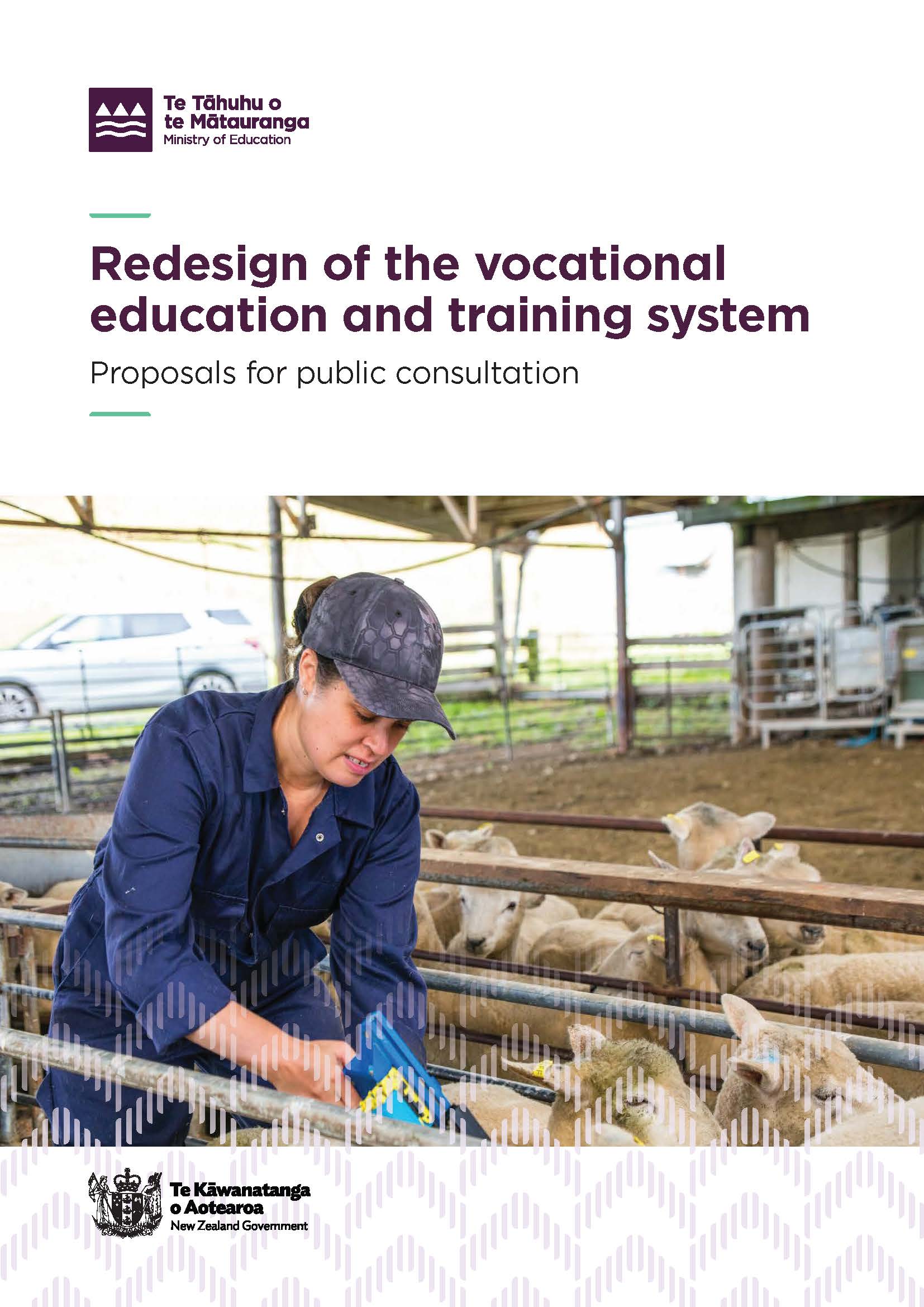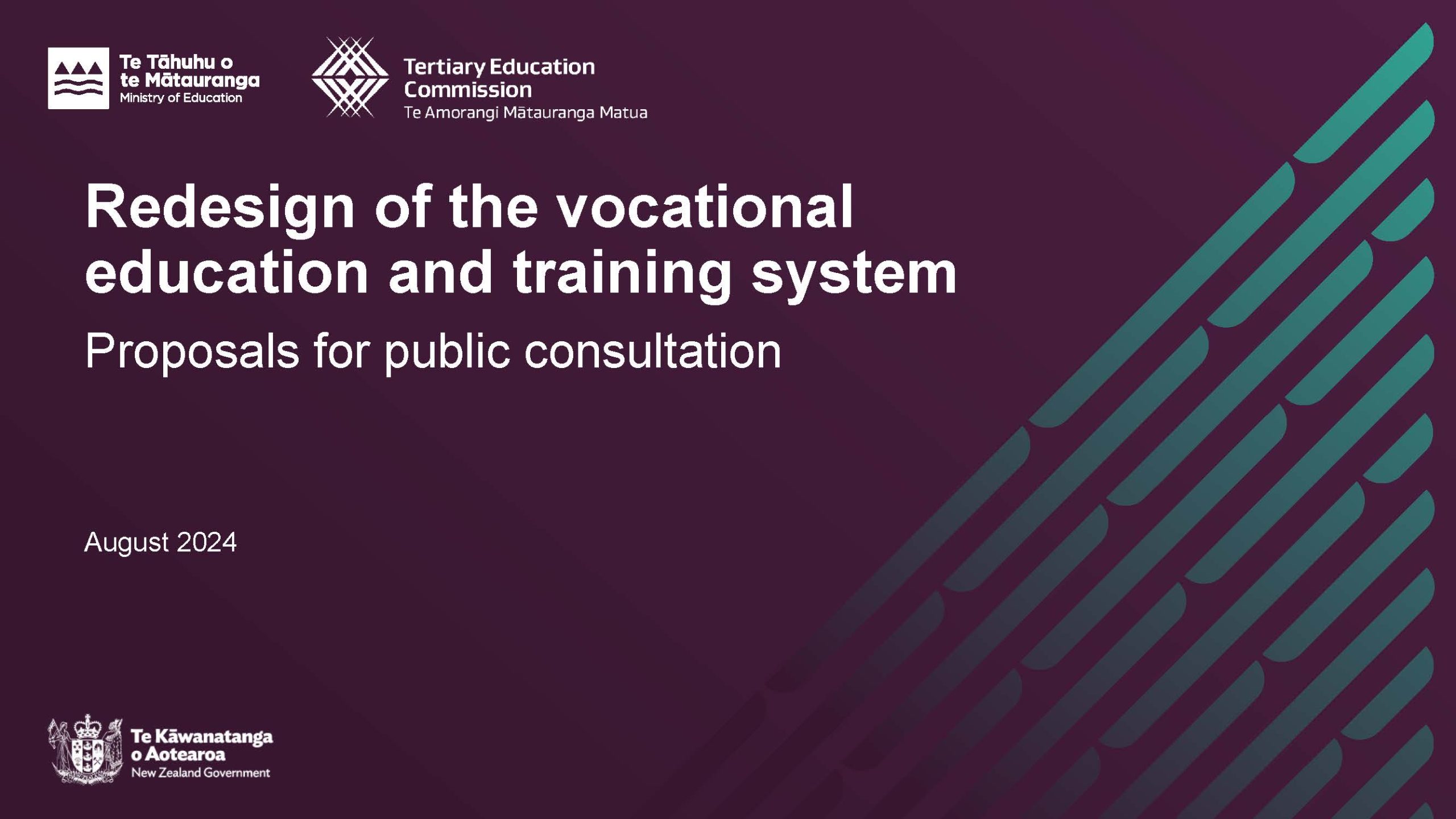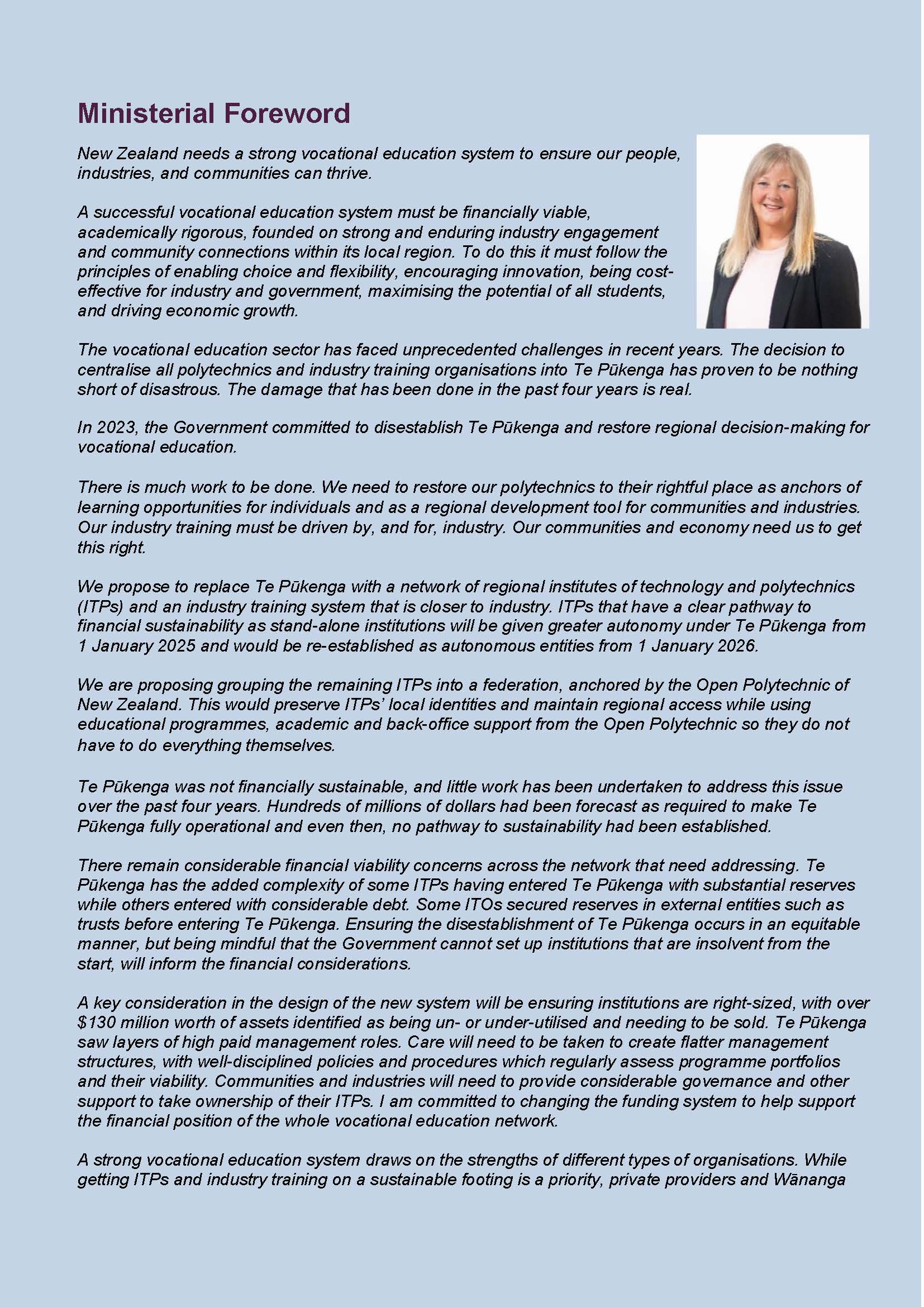Redesign of the vocational education and training system
the changing face of education
The latest updates
There are major changes coming to the vocational education and training system.
Newsflash. Details from the Peak Body Forum briefing August 5 2024
On August 1, 2024, the Government announced it was consulting on proposed changes to the Vocational and Education Training VET system. The consultation period will run from August 1 to September 12, 2024.
Yesterday, August 5, 2024, the Peak Body Forum was invited to attend a proposal briefing.
There are three areas where the Government is seeking feedback through this consultation process:
- Returning to a regional Institute of Technology and Polytechnic (ITP) network which would see a combination of stand-alone ITPs and others joined in a federation model.
- There are two options for an industry-led system for standards-setting and industry training.
- Proposed changes to the funding for vocational education and training to better support the reformed system.
- The Government wants to hear your views on the proposals. They are requesting detailed knowledge and different perspectives of people across New Zealand to help get the final design right. The Consultation Document Redesign of the vocational education and training system. Proposals for public consultation, the slides from the Peak Body briefing and Ministerial explanation can be accessed below.
Information from Ministry of Education Website
The simplification of qualifications and other credentials
The Government has committed to disestablishing Te Pūkenga and replacing it with a system that restores regional decision-making and connections between Institutes of Technology and Polytechnics (ITPs) and their communities.
The Government is seeking feedback on proposed reforms for three parts of the vocational education system through this consultation:
- A redesigned Institute of Technology and Polytechnic (ITP) network that retains access to ITP provision in regions, through a combination of stand-alone and a federation of ITPs.
- Options for an industry-led system for standards-setting and industry training.
- Changes to vocational education funding from 2026 to better support the reformed system.
Vocational education and training is a critical part of New Zealand’s education system. It helps learners to acquire the skills and knowledge needed for work in specific roles and industries and provides pathways into a wide range of careers including traditional trades, healthcare, service industries, information technology, food and fibre sectors, and community care.
Vocational education and training is a major contributor to the economic prosperity of New Zealand and New Zealanders. That’s why getting these reforms right matters, and why your feedback on the future of vocational education delivery in New Zealand is so important.
There will also be meetings and other engagement opportunities where those interested in/or affected by the proposed changes can hear more.
The Tertiary Education Commission (TEC) and Ministry of Education (MoE) will hold regional meetings to inform stakeholders of the VET proposals.
Meetings will be held in Whangarei, Auckland Central, South Auckland, Hamilton, Rotorua, Hawke’s Bay, Palmerston North, Taranaki, Wellington, Nelson, Greymouth, Christchurch, Dunedin and Invercargill.
The dates and locations of meetings, as well as details of how to register to attend will be published on TEC website.
For access to further information from the MOE website click here
What is Vocational Education?
Vocational education gives people the skills and knowledge they need to work in a particular job or industry. It covers traditional trades, like building and engineering, but also includes a wide range of other occupations, such as health, design, and business. It can be taught by a provider – currently Te Pūkenga, a PTE, or Wānanga – or directly by employers in the workplace through a structured apprenticeship or traineeship, or in a combination of the two. In 2022, there were 280,000 students in vocational education. Vocational education receives more than $900 million a year in public funding.
Prior to 2020, a network of 16 publicly owned ITPs, located in both regional and major centres, delivered most provider-based vocational education.
At that time, work-based vocational education was arranged through Industry Training Organisations. They were responsible for arranging work-based training, which included purchasing any off-job training components, providing learning materials, and assessing learning. They were not permitted to directly provide training themselves. Industry Training Organisations also developed sub-degree qualifications and skills standards for the industries and occupations they covered.
The previous Government’s Reform of Vocational Education merged ITPs into a single national provider. Te Pūkenga was also given responsibility for working with employers to deliver most work-based vocational education, through a Work-based Learning division made up of most of the former Industry Training Organisations.
As part of the reforms, six Workforce Development Councils (WDCs) were established for different areas of vocational education. Workforce Development Councils are responsible for working with their industries to develop vocational education qualifications and standards, moderating assessment, and providing leadership on meeting future workforce skill needs. However, they cost $65 million and the Government believes they may not be providing value for money.
Redesign of the vocational education and training system documents
SIGN UP TODAY:
How to Get the Latest Stories Hot off the Press
AECTP is the Industry Peak Body and is working to keep you informed of the many changes going on in our world.



